This is Post 3 of 3 about my pursuit of the Triple Crown of Long Distance Hiking and the Appalachian Trail. I started in 1995 with the Pacific Crest Trail, but finished far short that year. I hiked the entire Pacific Crest Trail in 1996 and the Continental Divide Trail in 2016. To read the previous posts look for the link “Triple Crown Hikes” or click here.
I was nervous about hiking the AT. “Welcome to New England hiking!” my friend Brownie wrote in an email. “Why the nerves?”, I blogged the night before climbing Katahdin. This was not the well-graded PCT I hiked in my 40s, and Brownie knew it. I was 67, and about to walk and sometimes crawl over steep, rocky terrain for 2,169 miles on the AT for the first time.
The five-hour hike up and down Mt. Katahdin was spectacular. In Maine I embraced the lush forests, ponds and lakes, but learned quickly how the steep, rocky terrain can beat up a SOBO hiker. My good friend Marmot had advice when our paths crossed in Maine. “This is the hardest state on the AT; take more zero days here!” I took the advice and ultimately loved hiking the White mountains and the Presidential range in New Hampshire in great weather. Thru-hiking southbound was a good choice for me.
After several scary slips, trips and falls, I was very lucky to escape the New England states with mere bloody cuts and scrapes. I never imagined a hurricane would reach as far north as Vermont and force me to take shelter in a hotel. It was Hurricane Henri, which flooded New England and New York. Weeks later, Hurricane Ida, the second most destructive hurricane ever to make landfall in Louisiana, drifted north and sent pouring rain into Connecticut. After nearly smashing my teeth in a fall, I asked a hiker, “why would anyone choose to hike this trail? If I had to do just one long hike, I would not choose the AT!” Before exiting New York, I judged the AT as tedious and sometimes frightful.
In Pennsylvania, after sloshing through ankle-deep water in another downpour, Triple Crowner Jeff Zimmerman met me at the Peters Mountain Shelter near Duncannon with snacks and a gallon of water! Zero days in Gettysburg with my father-in-law, Bill, and another zero in Harpers Ferry with CDT friend Elusive were refreshing and necessary breaks from the trail. Monuments to wars and other notable events in U.S. history taught me the AT was more than the truer wilderness I sometimes craved. Further south, in Virginia, I embraced the sound bath created by disturbing the deep layers of crisp autumn leaves under my shoes.
Change was assured, though. “South of here the mountains are higher and it’s getting colder!” warned a former hiker while I ate C-store ice cream. Soon enough I got online and bought stuff: warmer layers and a 10-degree sleeping bag. They weighed more, but it did not matter. Keeping to my age-appropriated hiking pace and often guided before dawn by the bright beam of a headlamp, I took my first steps in total darkness. One early November morning, after dream-filled sleep in a dreamy, warm sleeping bag, I hiked 28.7 miles through the Grayson Highlands. Mostly, though, in the final weeks on the AT I found enjoyment of the Appalachians more than pursuit of miles. The 84-year-old AT was a wise elder ignoring my earlier, negative judgements of the trail. At my age and thousands of miles of experience, I should have known better than to harshly judge the trail. It turned out I simply loved hiking in Virginia, where my family lived briefly when I was eight years old. And I was in love with the AT.
On Thanksgiving Day, while staying at the Standing Bear Hostel in Tennessee, trail angel Bloodhound drove me to Hot Springs, North Carolina where Janet Hensley (The Miss Janet) organized a feast for AT hikers. More than a festive meal, the unique culture and kindness of the AT embraced me. Three days later, in the icy, cold Great Smokies National Park a man asked how the hike was going. In that moment I recalled the arc of my AT journey evolving from the struggles of a 67-year-old hiker who found respect for all things Appalachian Trail. “The AT is hard,” I told him. “And I am having fun!”
After leaving the Hostel Around the Bend in Hiawassee, I savored the four days and 52.5 miles that remained to reach Springer Mountain and the completion of my 25-year effort to achieve the Triple Crown. I did not know if I would ever do a 5-month, 2000-plus hike again, so the last hours were precious. I was 67 years old and wiser, perhaps. All I really wanted was walk through forests, meadows, mountains and among wildlife. I wrote in my blog: “The weather is perfect…enabling me to savor the last few glorious, clear sunny days on the Appalachian Trail. I am embracing some special moments: seeing a rare Spotted Towhee, my favorite bird; conversations with other hikers who are passionate about this trail and curious about my thru-hike; the clear sky at night with the moon, planets and stars illuminating my campsites; owls hooting; the incredible sunrises and sunsets; and simply walking!” Life was good. I inhaled all the sights, sounds and aromas of the Georgia mountains carpeted in dry leaves from the now-baren trees ready for winter. The Towhee as a good omen for my finish, as other animals did when I finished the PCT and CDT years ago.
The evening of December 14 was cold and crisp, and only one other hiker was camped within the sprawling Hawk Mountain Campsite where I set up my tent for the last night. It was reminiscent of the final evening on the CDT in Glacier National Park five years before. Beneath a pine tree with the full moon illuminating campsite #7, I cooked my favorite dinner of pasta with homemade, reconstituted tomato leather. The stillness of the air and the brightness of the moon was remarkable, and those wonders alone would ensure the memories of the last camp along the AT would never be forgotten. I focused my gaze skyward and noticed the moon illuminating the long, green needles of the trees. Each invigorating breath produced steamy clouds drifting skyward. Every step toward my tent pressed crisp, dried leaves under my shoes and produced the familiar crunching sound. In the morning I would say goodbye to the AT, but I did not want to let go. Would I ever do anything like this again? Would I ever feel this good again? No answers, just hope.
For over one month it was normal and necessary to pack up my gear before sunrise. It was a task made easier by the bright light beaming from my forehead. After sadly leaving campsite #7, I aimed the beam on sequential vertical white blazes painted on the trees, each one guiding me along a hidden trail. At 7:15 dawn captured the darkness. At 7:36 I turned off the headlamp. At 8:30 I crossed the Benton MacKaye Trail, named in honor of the man who created the idea for building the Appalachian Trail in the 1920s. At 9:00 a trail sign displayed “Springer Mtn 4 1/4.” At 10:55 another sign had “.9”. Getting close! The AT was completed in 1937, and it was first thru-hiked in 1948 by Earl Shaffer. I followed in the footsteps of thousands who had hiked the AT before me, and hundreds who walked 7,500 miles to earn the Triple Crown.
Just one-half mile from the summit, I looked at the lens of my camara and spoke from the heart:
“I like to think I am finishing the trail well. The lessons I learned from hiking the Pacific Crest Trail and the Continental Divide Trail really carried over. I had resilience, persistence, managed risks, took care of myself, stayed injury free. At 67 years old I don’t have any pain after hiking 2,193 miles! I think that’s a big deal. So, I feel very good. Its not really the end of the trail in a sense. My life will be better having done this. I also learned to respect the Appalachian Trail. As I finished Maine and New Hampshire, and all the difficulties and pain associated with that, those two states being very difficult, I began to learn more about the history of the trail, the history of the land the trail passes through. The people who are so passionate about the trail, everybody from trail angels, shuttle drivers, hostel owners, hikers who come back year after year. They, along with the hikers, create the trail culture and deserves respect. In a few minutes I will be at Springer Mountain. I’ll say goodbye to the Appalachian Trail for now. But it will always be with me in many, many ways.”
Although there is nothing visually remarkable about Springer Mountain, it was beautiful. As a monument to the AT, it is a giant like Katahdin in Maine. I walked eastward with the mid-morning sun glaring through skinny trees, and I stepped carefully on and over all-too-familiar rocks and roots until I reached a small clearing at the top. Immediately I saw the 3-foot square metal plaque embedded on a rock slab angled toward the south. It was 11:40 a.m., and I was happy that I reached Springer 20 minutes before noon, the planned arrival time Cindy and I discussed in mid-October while I laid in a sleeping bag. Then, the most remarkable thing happened. Within 30 seconds of my first look on the plaque I heard the voices of Cindy and her friend, Sharon! After embracing Snake Maiden (Cindy’s trail name) and meeting Sharon for the first time, Cindy took out a carefully packed, rolled up “Greg in Wild green” crown, adorned with three trail symbols and sparkly dots and hearts. I wore the crown proudly while expressing my appreciation to Cindy for her support and encouragement while I was away from home for nearly six months. Later, I would wrote in my blog, “I really did it!”
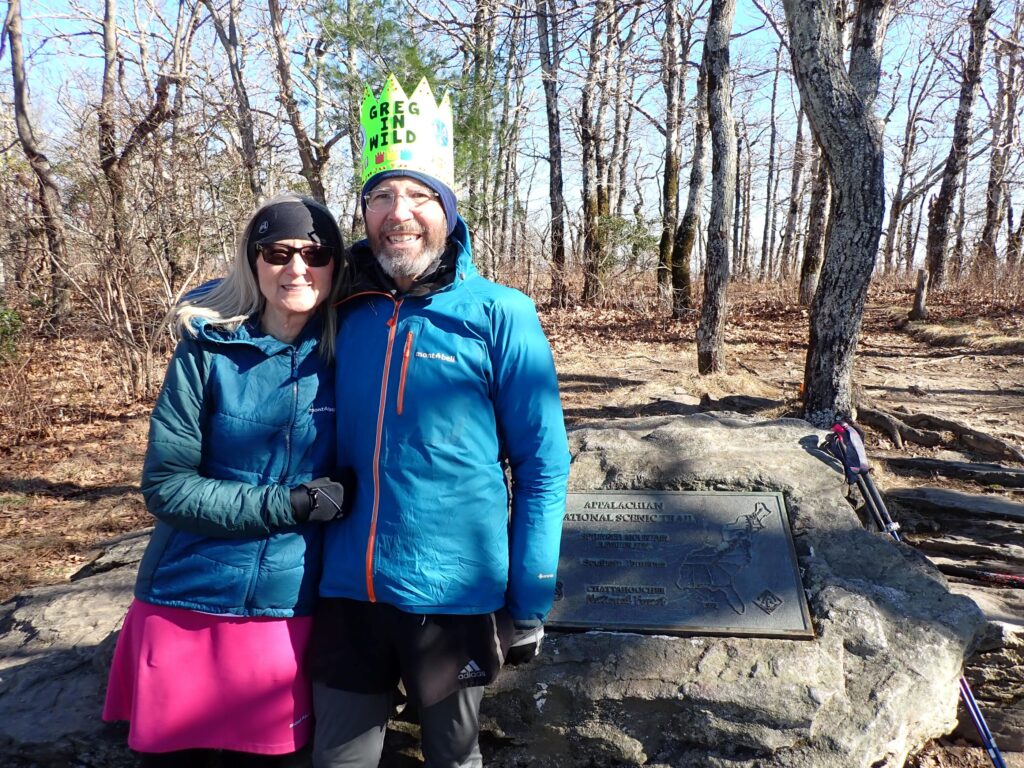
Time traveling through the Triple Crown
It makes little sense to delve into the details of how long-distance hiking on the three trails has changed in 26 years. To the experienced hiker they are obvious: GPS technology, ultra-light gear, smartphones, and the availability of information, photos, videos and blogs for just about any long-distance trail. The following are also more common today than 22 years ago: packed backcountry campsites, litter, permit requirements, less solitude, more novices who really don’t know what they are doing. Do not include me among those who dislike the crowded, over-used trails. Instead, I celebrate the wonderful people I have met while hiking the Triple Crown, many whom have influenced and inspired me in positive ways. I believe I paid it forward a time or two.
If you think the trails became crowded soon after 2012 memoir Wild by Cheryl Strayed was published, along with the movie in 2014, consider this: I may have had an innocent and peripheral influence in this phenomenon. Grab a copy of Wild and read pages 85 to 89. Cheryl told me in 1995 she aspired to be a writer. After reaching the Bridge of the Gods she began paying dues: graduate school, writing and more writing, even while undercover as the author of Dear Sugar. I am proud of her accomplishments.
I learned a few good lessons as I aged from 42 to 67: Staying active by simply walking and hiking kept me feeling good enough to thru-hike the trails. Afflicted with A-fib, a heart rhythm disorder, staying reasonably fit was mandatory. Experience and the ability to adjust frequently are important. My pace slowed (PCT: 25 miles per day; CDT 19; AT: 15). I compensated by accepting longer hikes (PCT: 131 days; CDT: 169; AT: 176) and simply enjoying walking with nature.
It is climate change that concerns and frustrates me the most. Between 1996 and 2021, as I hiked the PCT, CDT and AT, the damaging effects of climate change were obvious. I observed with my own eyes the slow and depressing degradation of the lands through which the trails pass. Trees dying of bark beetles, increased frequency and intensity of wildfires, intensely hotter than normal temperatures which suck moisture out of the ground, shrinking glaciers, draught, erratic year-to-year snowpack, floods, hurricane-influenced extreme weather as far north as Vermont. In recently burned forests the snow melts faster, which can accelerate erosion. The changes affect not just hikers, but the entire world.
After years of being almost silent of anything related to climate change, and after 194 miles of PCT (7% of the trail) burned in 2020 and 2021, the Pacific Crest Trail Association’s Spring 2022 issue of the Communicator magazine focused on climate change with articles written by informed writers who describe objectively how climate change is altering the hiker experience. I understand that forest management and the cyclical nature of climate also has some impact on forest health. But decades of unchecked growth of CO2 emissions have undoubtedly caused droughts and fires to be more extreme and more frequent than years ago. Glaciers disappear, and previously reliable water sources become unreliable. The two photos in the slide show, below, are the result of wildfires in Montana during the recent 20-year drought.
Positive change is possible, and significant progress is underway. The PCTA, CDTC and ATC have elevated climate change as a key issue along with advocating equity for all users of the trails and the native peoples who lived on their lands for millennia. Members of Native American Tribes stand ready to teach us how they made their ancestral lands more resilient and to serve their needs for millennia. But more must be done to reduce carbon emissions in the future to prevent the worst, tragic outcomes.
My observation is that many, if not most, of our political leaders do not take climate change seriously enough. Elected representatives who deny climate change or do not support policies that reduce emissions still get elected, partly because their constituents do not see and feel the imminent threats to the environment that hikers see and feel when we hike across lands that are the most vulnerable to fire, drought, and other damaging conditions. Other issues take priority for many voters. For me, it is #1. As a long-distance hiker, I feel confident to make climate change part of my Triple Crown story.
Other changes between 1996 and 2001
The long trails in 2021 and how the hikers travel the many miles along the trails have evolved in many ways.
Gear: After 1996, the year I hiked the PCT, long distance hiking became an incubator for small businesses started by members of ALDHA-West. Some, like Ron Moak’s Six Moon Designs and Brian Frankel’s ULA, literally were started in their homes and grew to become larger, successful businesses. The upstart gear companies ultimately enabled the ultra-light revolution to become mainstream even before I hiked the CDT in 2016. It is worth noting that my gear for the PCT included an ultra-light, frameless backpack weighing just two pounds and a simple tarp for shelter. Today, there are many choices of well-made, ultra-light gear.
GPS and smartphones: “What, no paper maps?” I might have asked hikers 25 years ago. In 1996 the only guides and maps available were on old-fashioned paper. Along the CDT in 2016 I carried a Garmin GPS unit loaded with Bear Creek tracks. My smartphone was not my primary navigation device, but I had Guthook and the Jonathan Ley maps at the ready when I needed them. Paper maps were in my waist pack every step of the way. The AT in 2021 was the first of the three thru-hikes that I completed without paper maps. It seems my pack weight increased over time because I carried multiple electronic devices, including a 13,000 mAh power bank on the AT.
The trails and the internet: I Googled “long distance trails” and reviewed the top hit: https://en.wikipedia.org/wiki/List_of_long-distance_trails_in_the_United_States. I did not count the trails listed, but I hit the page-down key on my keyboard 14 times. The distances range from the 30.1-mile Art Loeb Trail in North Carolina to the 6,800-mile American Discovery Trail. And this list covers just the U.S. Want alternatives to the increasingly crowded Triple Crown Trails? Search lists like this one. Our friend Liz Thomas (Snorkel) recently hiked the Superior Hiking Trail in Minnesota, and I learned about her hike on Facebook. The Blue Mountains Trail in Oregon will probably be a new addition to the list. Want to see who is hiking any of these trails? Search Facebook, Instagram, Google, YouTube, etc. None of these resources existed when I hiked the PCT. For my hike on the AT I purposely avoided YouTube videos before I started. I chose to discover the trail with my own eyes and feet and not through another’s lens. While the hiker videos are fun to watch, it’s better to just hike!
Bears: Black bear are increasingly becoming a greater nuisance on the trails, partly because more people carrying food are present in areas where bear live. I evolved from storing food in my tent on most nights on the PCT in 1996 to NEVER storing it in my tent on the AT in 2021. I predict the AT will soon require approved food storage containers for the entire trail. Today, the cannisters are required in the Sierra Nevada on the PCT. On the CDT it was a safe choice to hang food sacks from trees in an Ursak. I am horrified that some CDT hikers do not take this precaution in grizzly bear country. Thankfully, I never had my food taken by a bear.

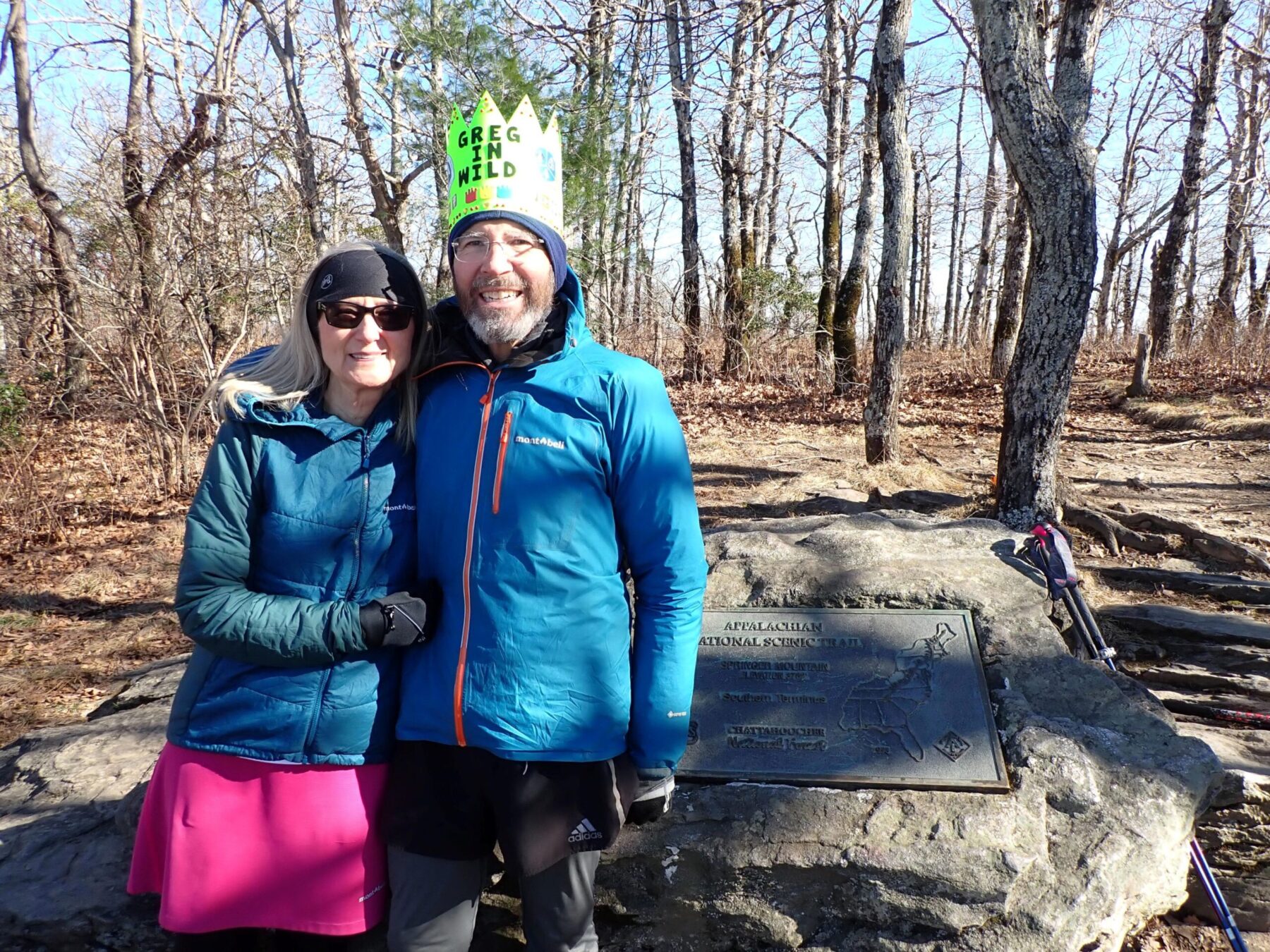
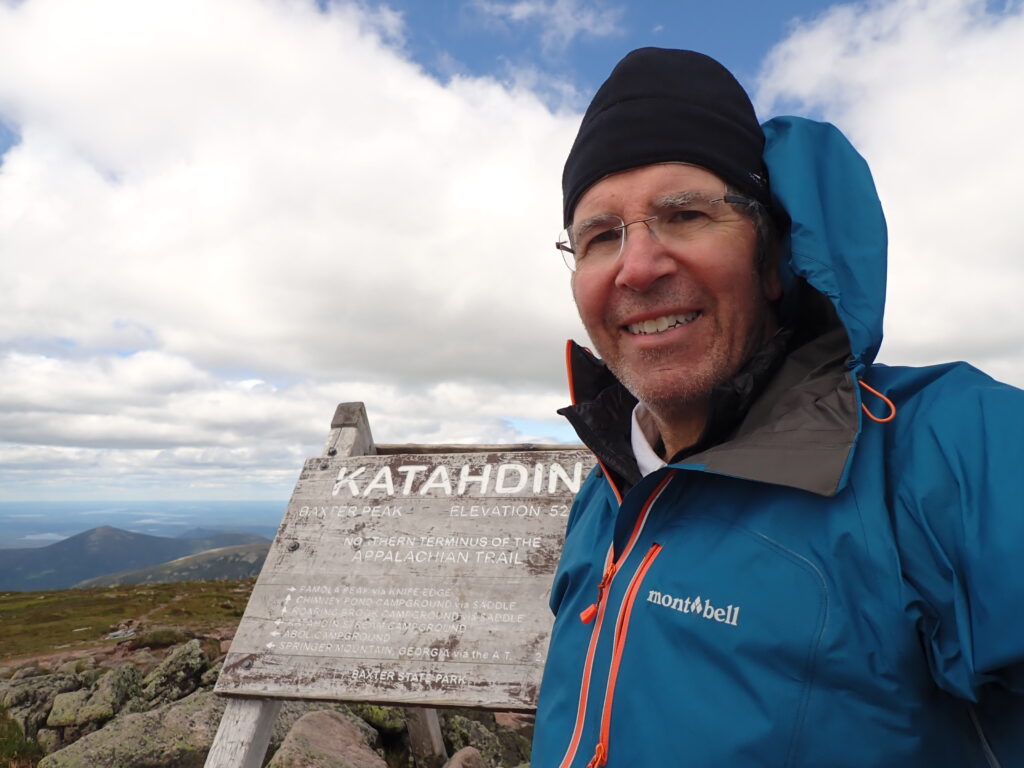

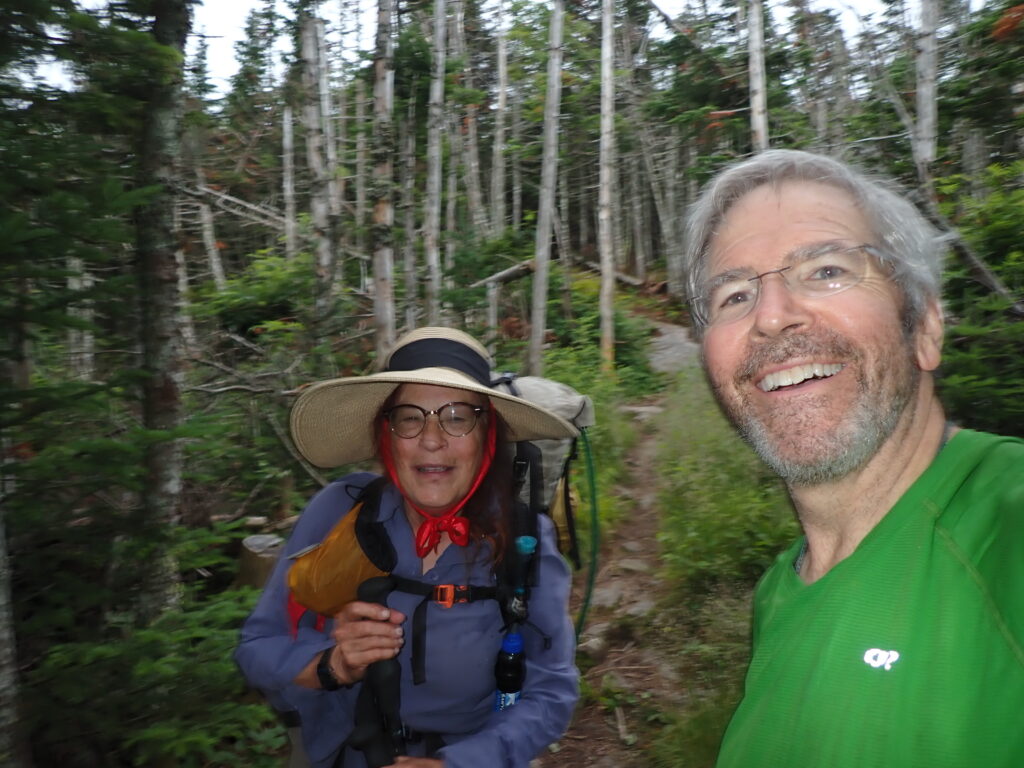
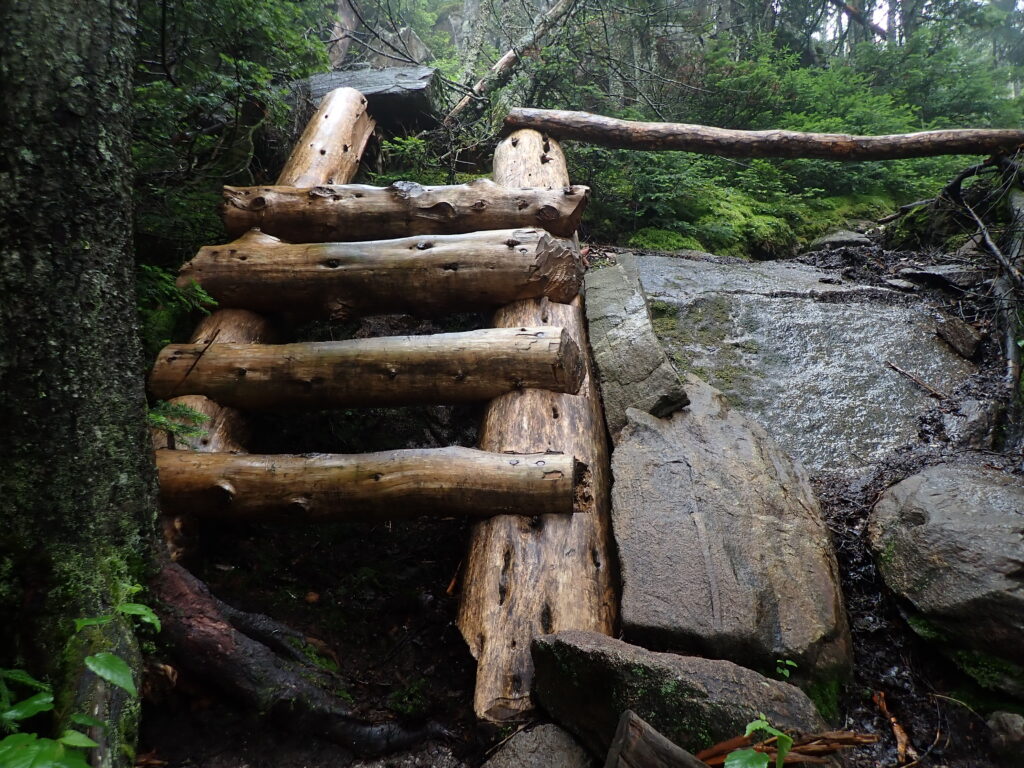


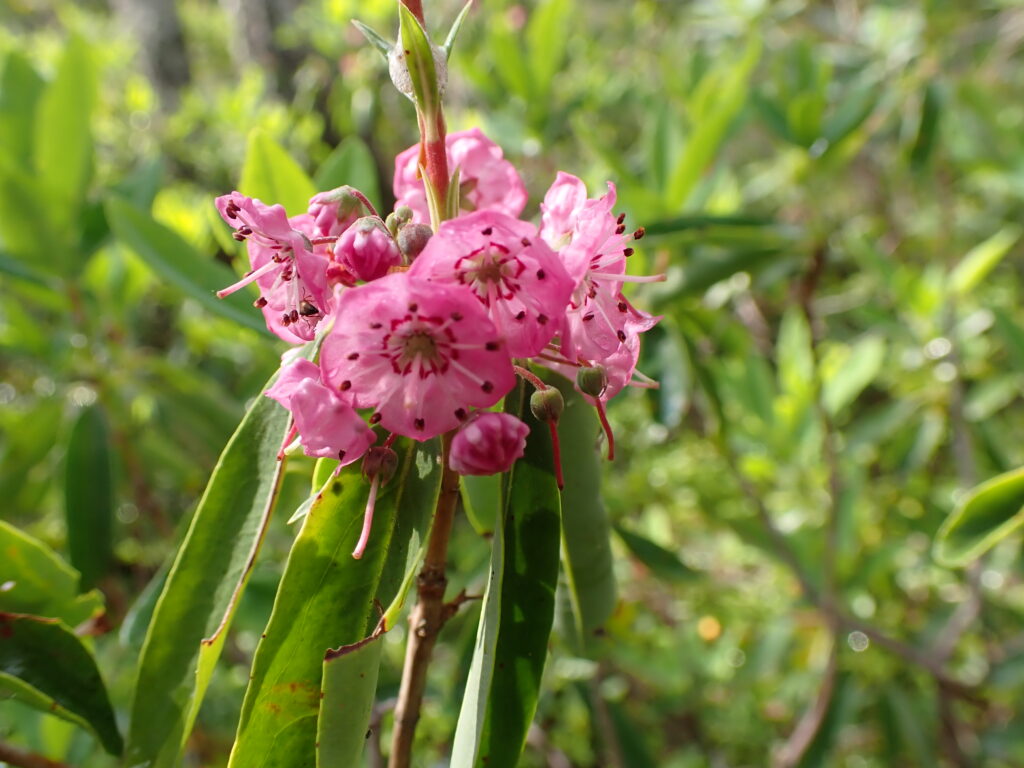
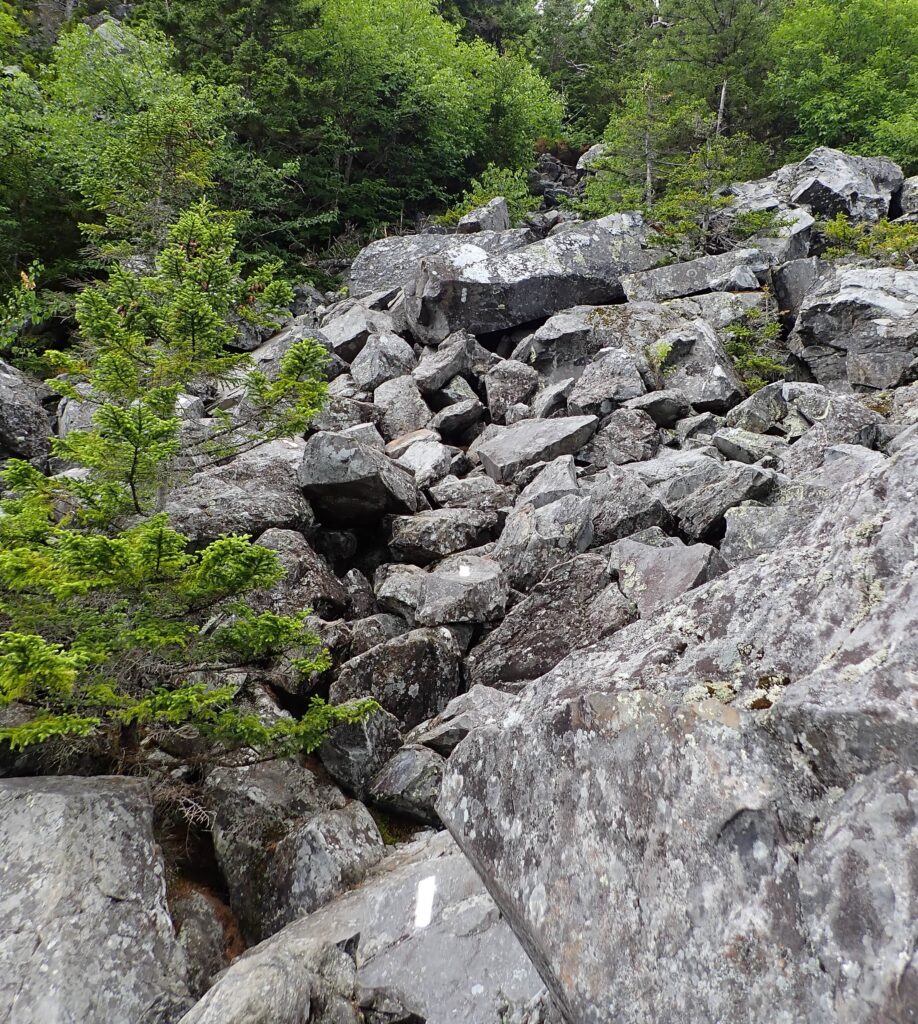

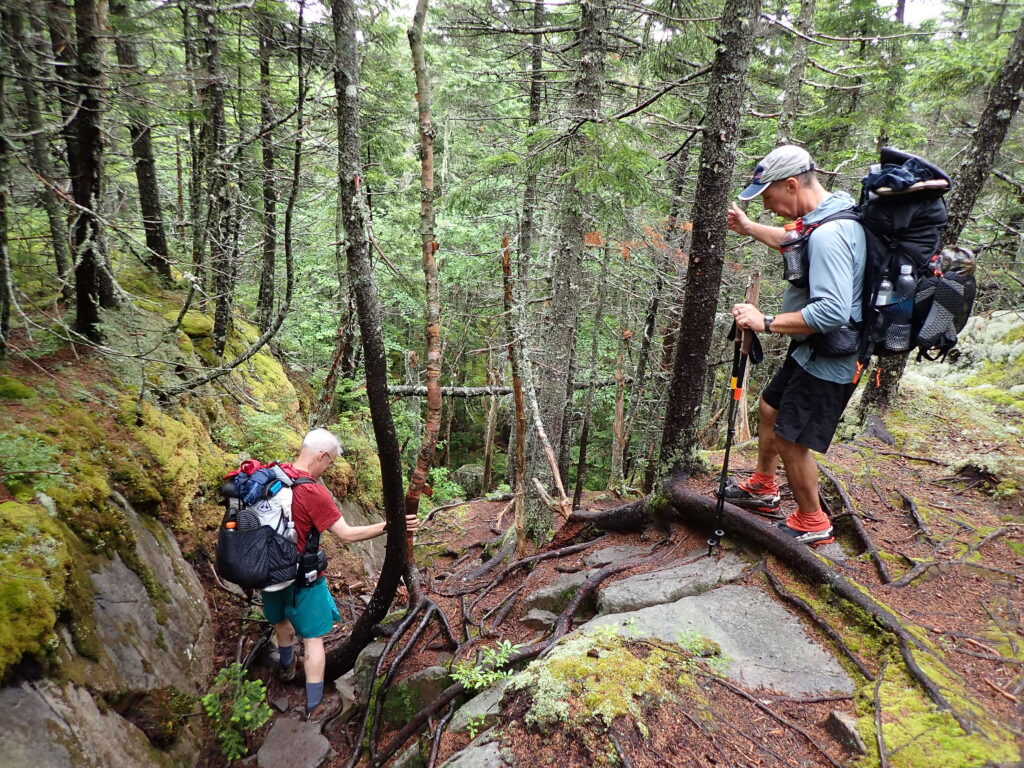
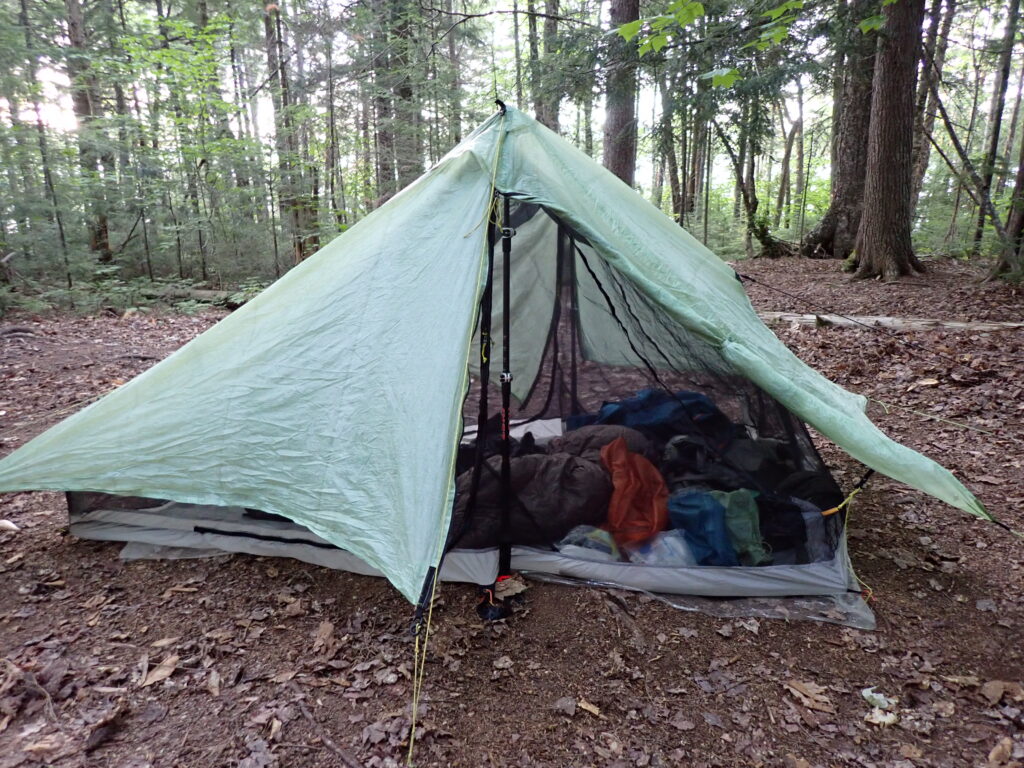

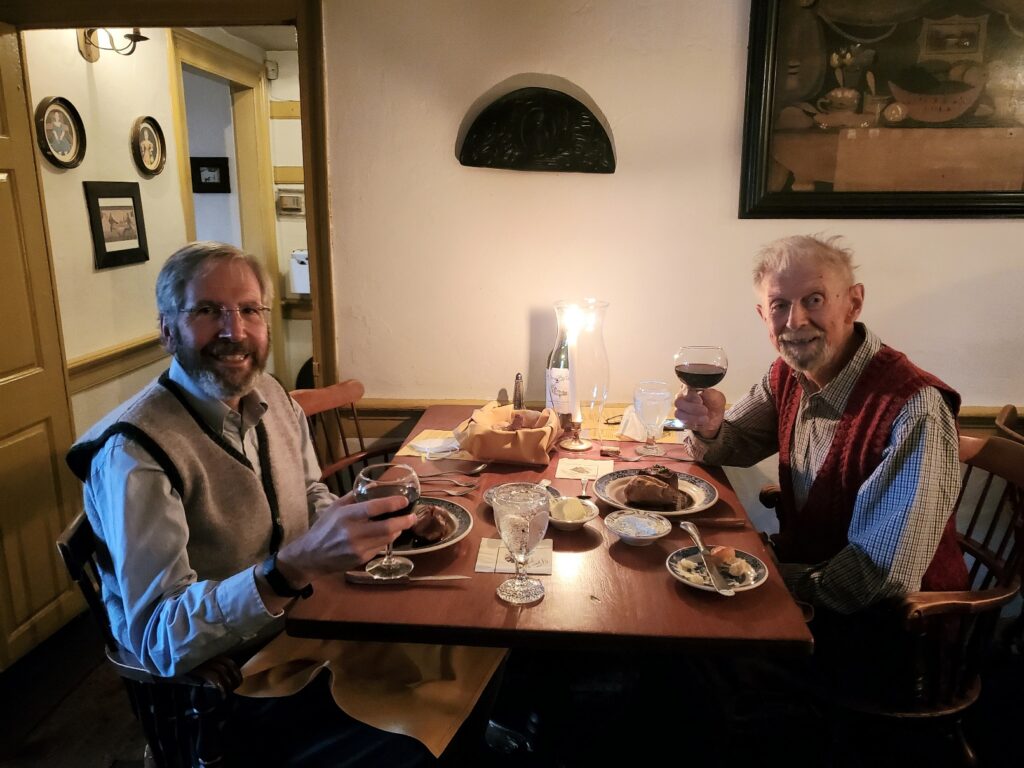

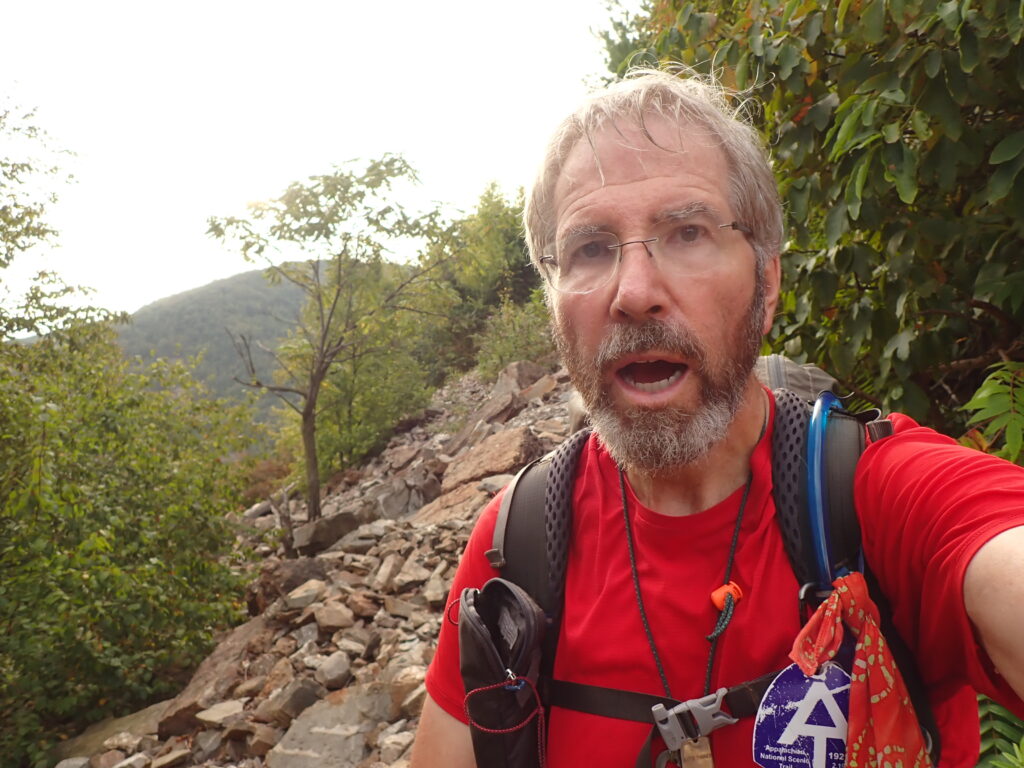
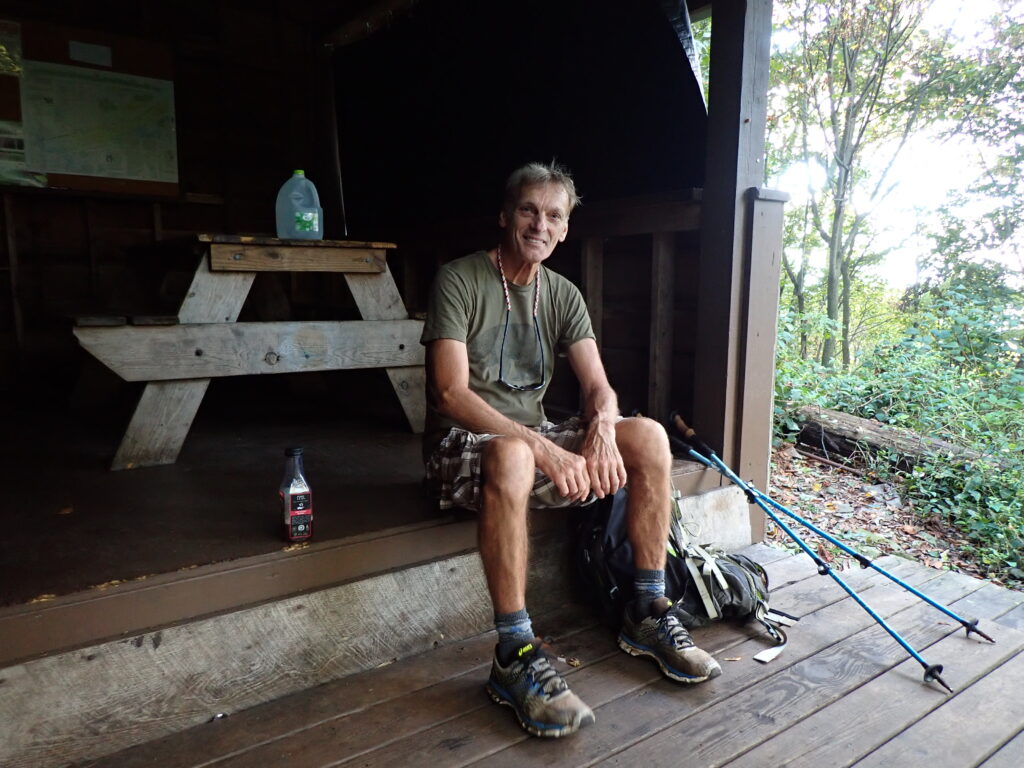
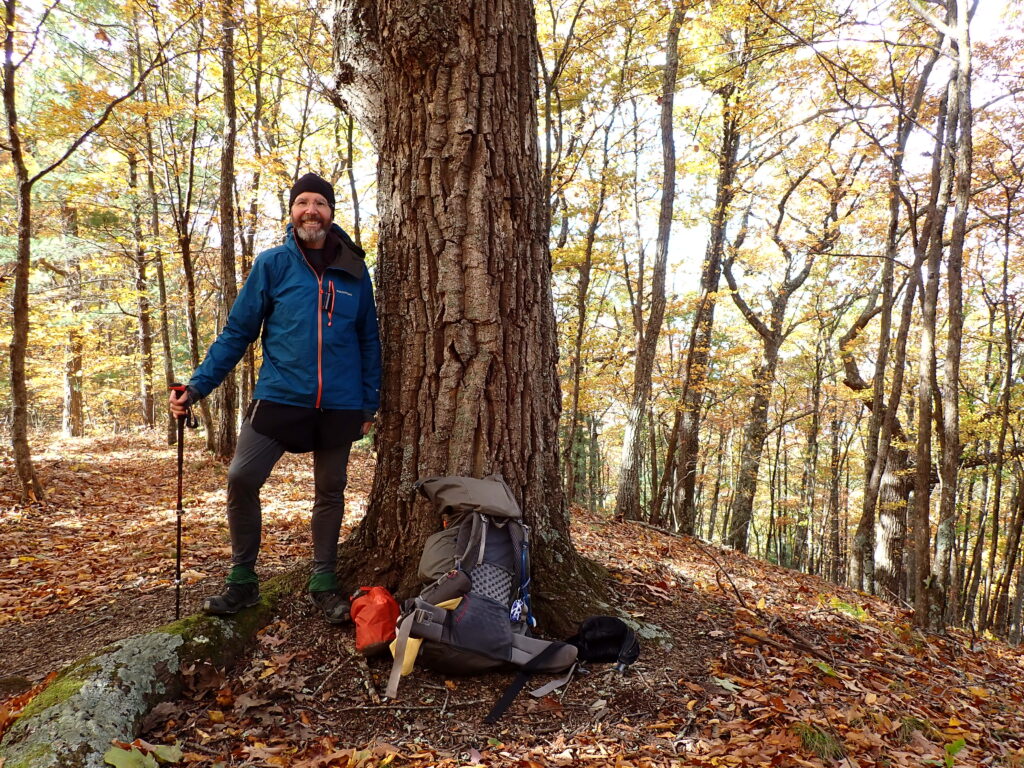

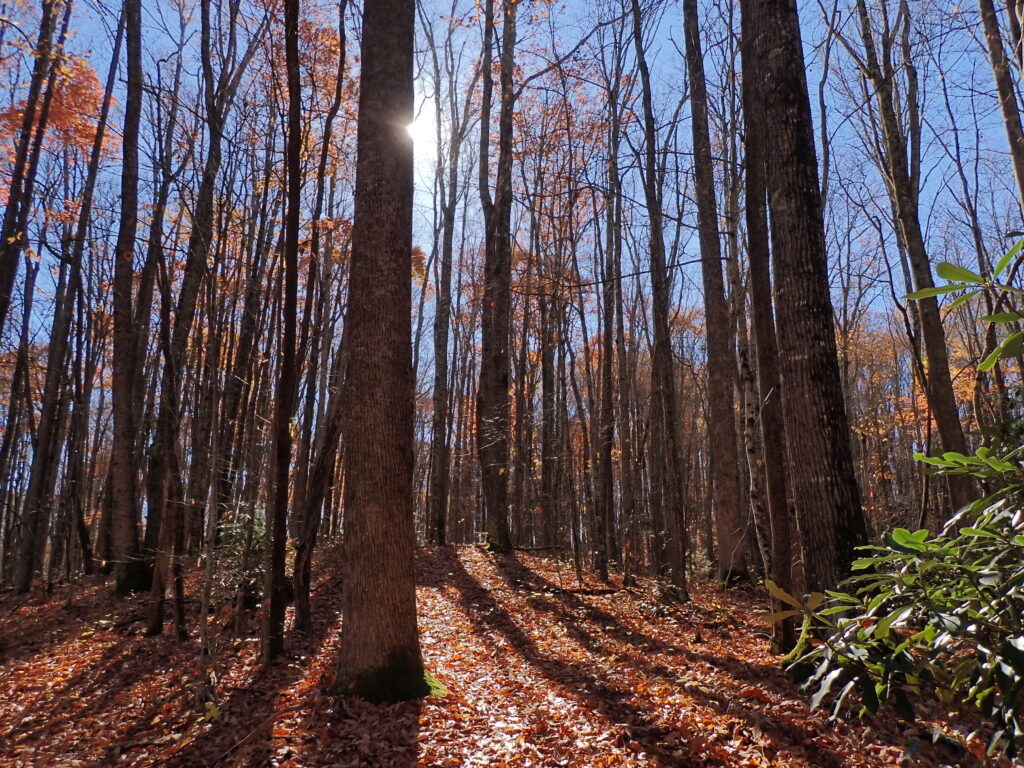
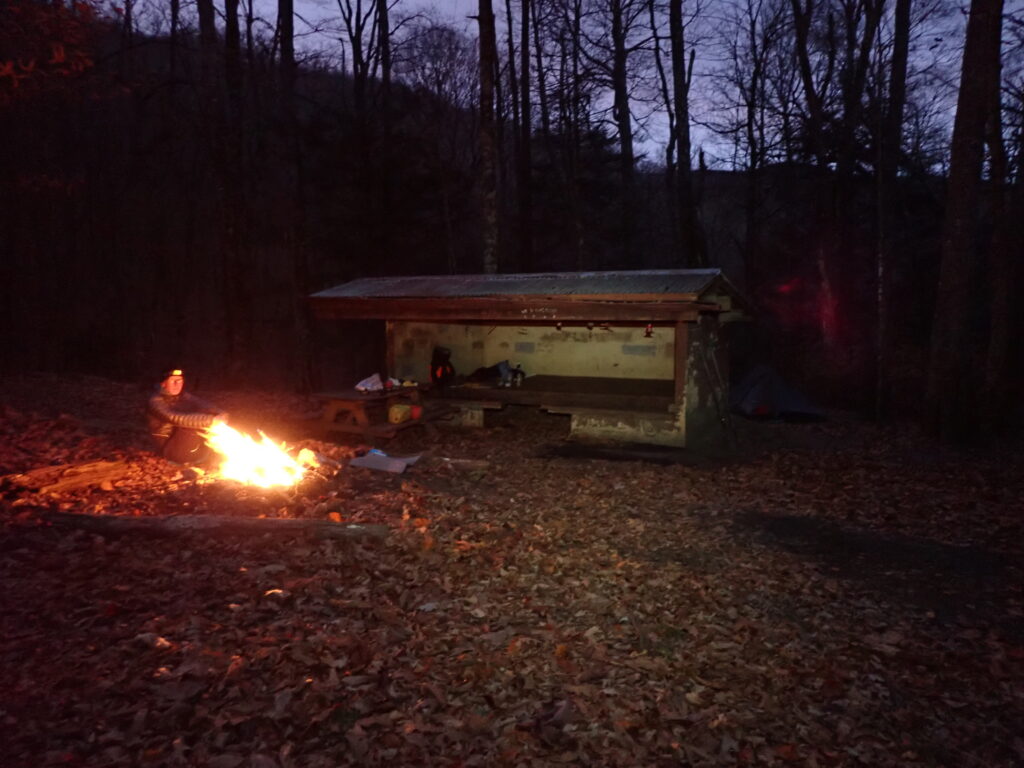
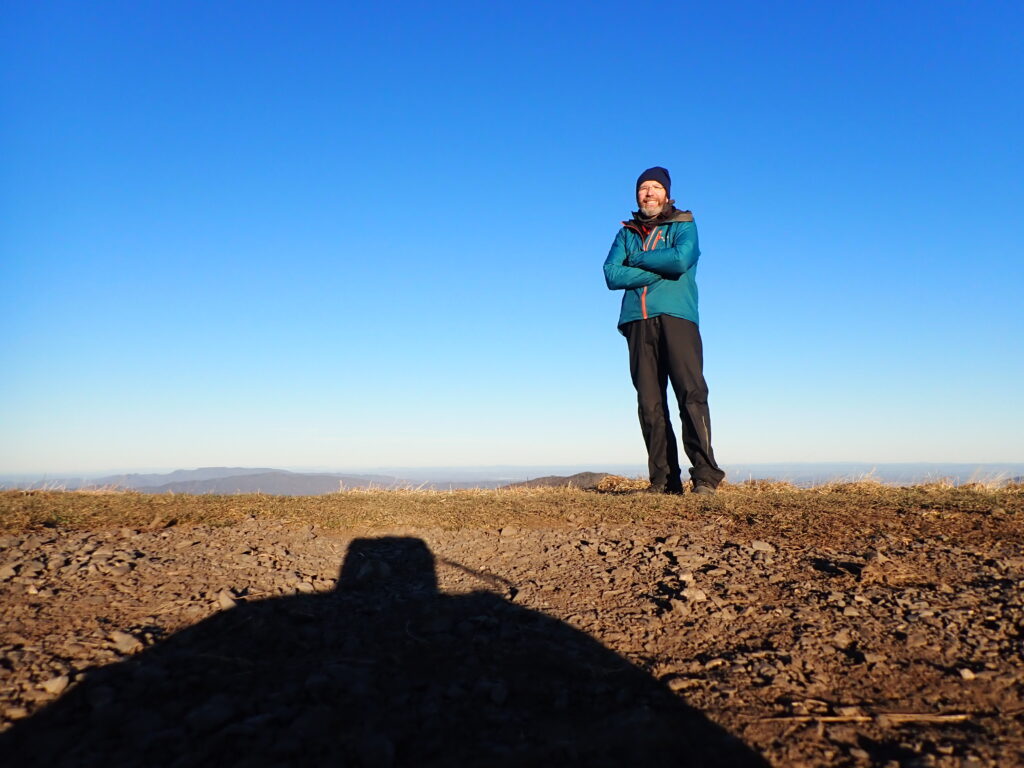
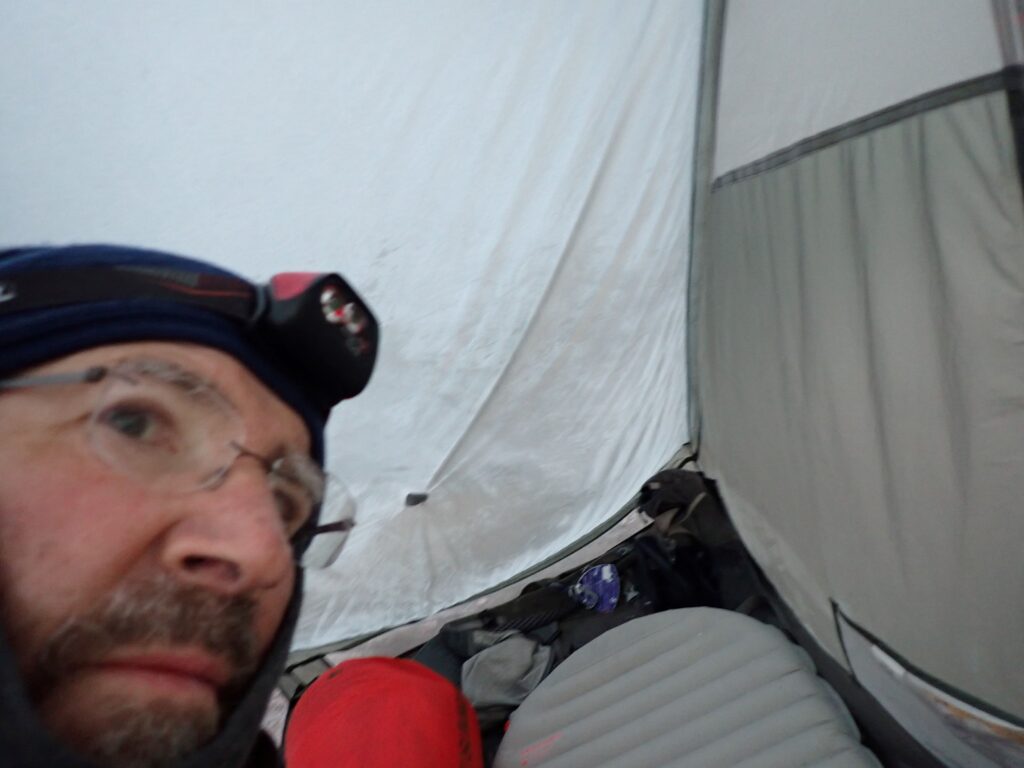
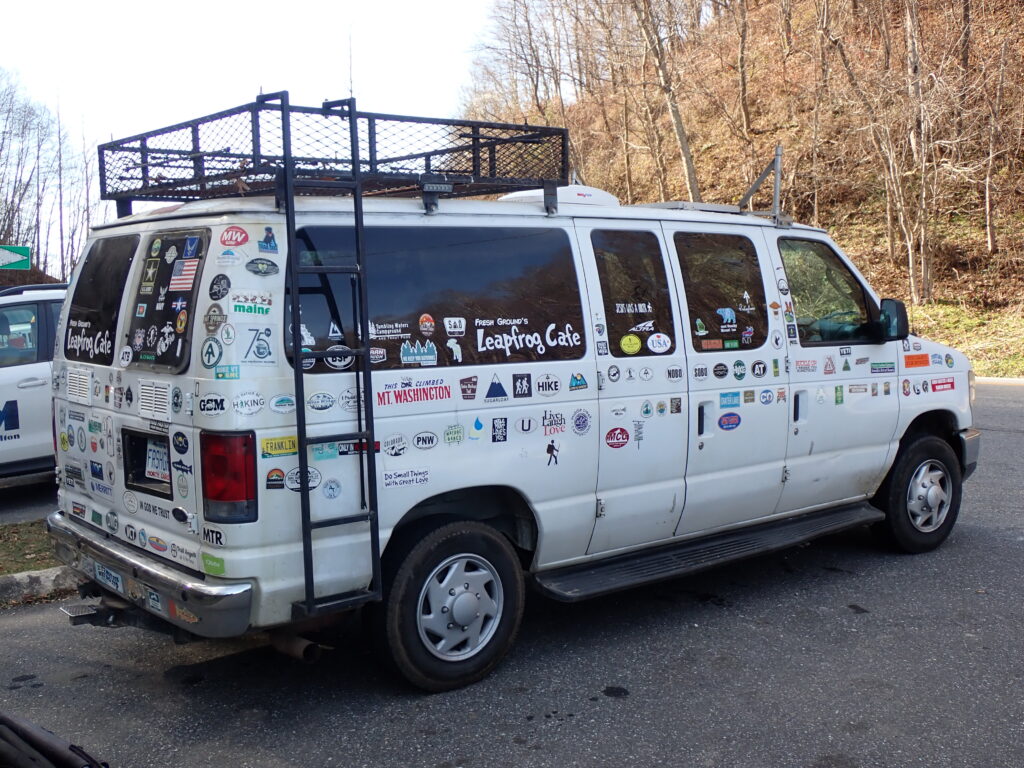

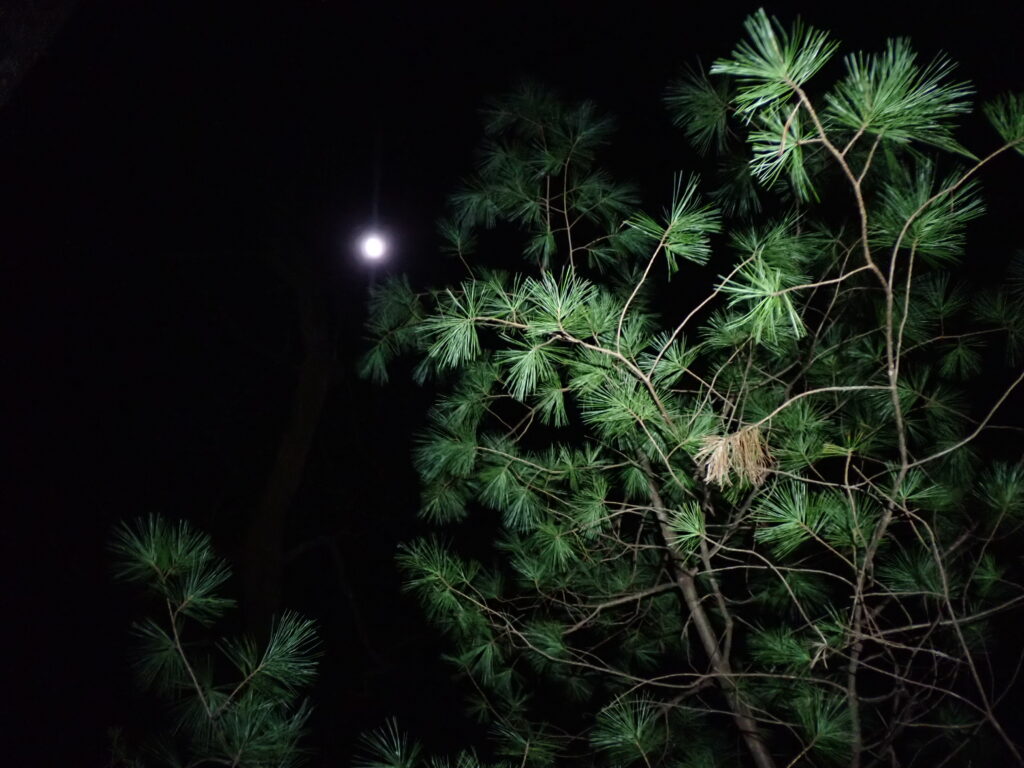
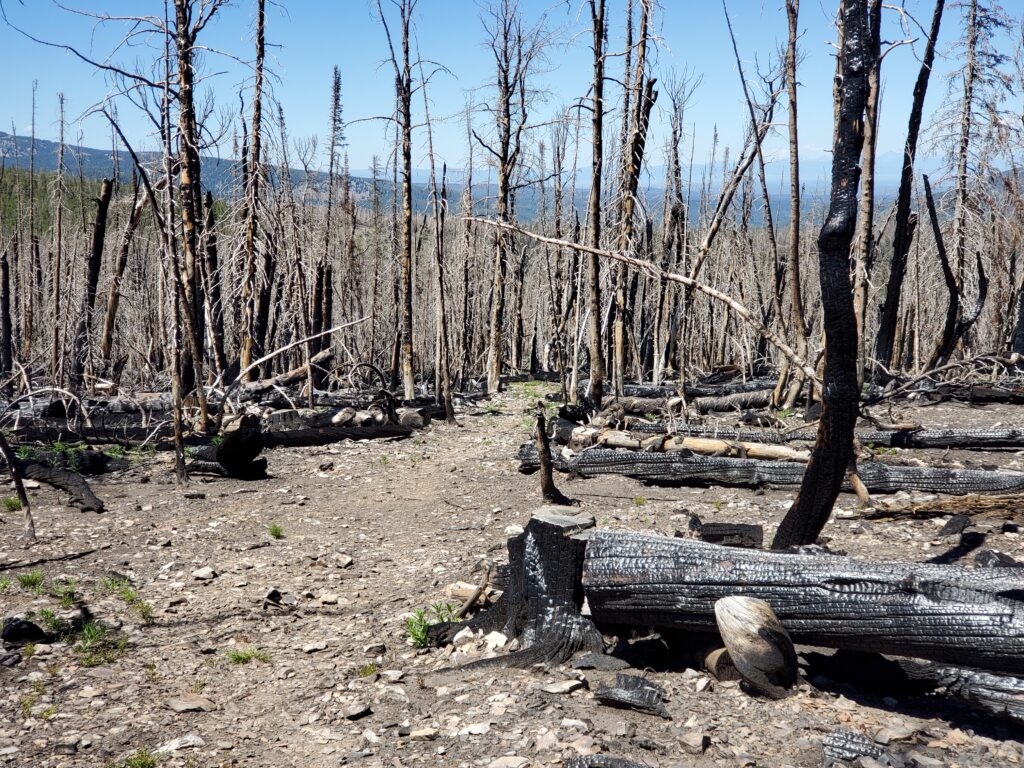
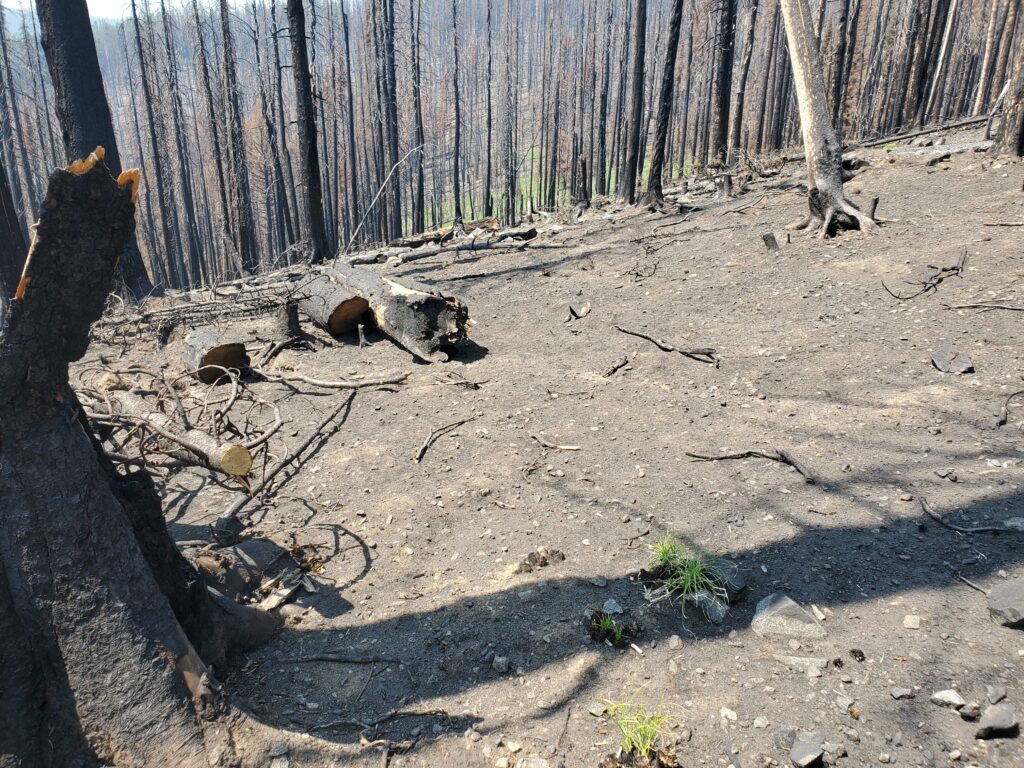
Great summary of your AT hike and your thoughts on changes in thru hiking.
A lot has changed since I did my Triple Crown in the 70’s.
David Odell AT71 PCT72 CDT77
Thank you David. It is always nice to read comments from one of the originals, one of the first!
Just loved hearing about your hikes again. You know that I followed you the whole way on the CDT and AT. And I had the most wonderful experience of getting to cross paths with you as I headed to Katahdin and you went south to Springer. You saved me from being whiny with some of your extra food. I always want to hear all the tiny details of the hikes.
Thank you, Marmot! Everyone reading this should know you were among the first few women who achieved the Triple Crown. Seeing you on the AT was one of the highlights.